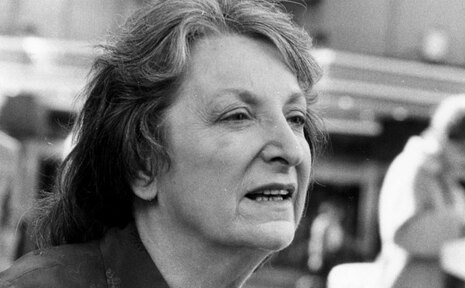On Kael – Louis Menand in 1995 in NYRB:
‘The academic term for the kind of antiformalism Kael promoted is “postmodernism.” Postmodernism in the arts simply is anti-essentialism. It is a reaction against the idea, associated by academic critics in the postwar years with modernist literature, painting, and architecture, that the various arts have their own essential qualities—that poetry is essentially a matter of the organization of language, that painting is essentially a matter of composition, that architecture is essentially a matter of space and light. The undoing of these assumptions is often taken to have been the work of high critical theory, of semioticians and Derrideans, and “postmodernism” is thought to refer to highbrow, avant-garde art and literature—to be a distinctly elitist cultural movement.
In fact, the cultural work was done long before “postmodernism” became a theoretical concept in the academy, and it was done by people whose audience was entirely mainstream. If we need to give it a brow, postmodernism was a middlebrow phenomenon. Its champion practitioners were Warhol (in painting), Mailer (in fiction), and Tom Wolfe (in journalism)—all perfectly accessible figures who played to a large nonacademic audience. Its “theoreticians” were Susan Sontag, who was an independent writer, Robert Venturi and Denise Scott Brown, who were architects, and Kael, who never finished college. For the notion that serious art must be appreciated formally was not so much a feature of modernist art itself—it’s not something most of the great modernists would have claimed about what they were doing—as it was the result of the way modern art and literature were taught to people like the people who read The New Yorker in the Fifties and early Sixties. Excessive critical concern with the formal properties of art—with the “elements of style”—was a middlebrow oppression. It didn’t intimidate poets; it intimidated moviegoers. It made them think there was something they ought to know about called “the grammar of film.”
This liberation of art from abstract prior conceptions was one of the great achievements of American culture in the Sixties. It is now being attacked for encouraging the supposedly dangerously relativist notions that “It’s art if I say it’s art,” and “Anything goes.” People said those things in the Sixties, and I suppose people say them now, but those are not the necessary conclusions of the lesson Kael helped to teach. A dislike of formalism does not entail a dislike of form. And openness to mass culture does not entail identification with the mass audience; it doesn’t require an attitude of épater les intellectuels or a belief that if it’s “of the people” it must be counter-hegemonic.
The critical attitude Kael represented only means approaching a work of art without bias about what “a work of art” is supposed to be. It is predicated on the belief that modern culture is fluid and promiscuous, and therefore that nothing is gained by foreclosing the experience of it—particularly if you are a critic. Pauline Kael understood these things, and she consciously built her practice as a reviewer around them; and that is why she is a supremely important figure even for writers who, although they grew up reading everything she wrote, always strived, in their own work, never to sound like Pauline Kael.’
Read the article here.
This article, almost three decades old, is still very much worth reading.
Adler’s famous attack on Kael is worth your while as well, see here, but I would say that Menand with all his hesitation does justice to Kael.
If it’s possible to approach ‘a work of art without bias about what “a work of art” is supposed to be’ remains an open question.
